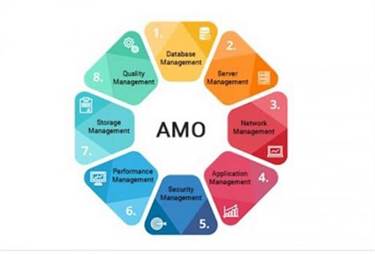Group members may have a hard time working with other teams as they’d robust group dynamics with their earlier team. This is the stage when things start to settle down as your group finds their groove. As they develop more comfy working together, group members are extra comfortable asking for assist completing a task or getting constructive feedback. Your staff starts to increase their productivity at this stage as they turn into extra familiar with their teammates and their working types. Psychologist Bruce Tuckman was the primary to document the completely different phases that teams go through as they develop.
In this stage, groups often turn into more snug asking for what they need in a productive method and providing feedback on group and management performance. It’s necessary to keep in thoughts that groups in the Norming stage could not yet have gotten every thing proper and still need steerage and consideration as they transfer towards changing into an effective staff. It’s vital to stay alert to group dynamics and each individual and group performance – you could wish to course right or additional strengthen certain aspects of how your group works together.

They not solely perceive the way to ask for assist, however they’ve additionally developed a gauge for when it’s an opportune second to talk up, and involve you. Not solely are you happy with the staff improvement they’ve exemplified, however you’re also happy with their individual capacity to stay in integrity with the standard of their work. The norming stage is more harmonious since teams understand why it is important to ask for assist, and tips on how to come to you with questions when they want steerage. Managers and project leads must hold their eyes open, however be principally hands-off so the group can construct muscle round working independently.
This is the place teams start to settle right into a working sample, recognize one another’s strengths and turn into more practical as a group. All teams are made up of people with various ability units, perspectives, and desires. As groups work collectively, conflicts in considering, strategy, or working practices can and can arise.
From Forming To Performing: Leading Through The Four Levels Of Group Improvement
There are not any extra groups within the staff and as an alternative, all of them work in a unit with a clear leader. Due to this, work efficiency increases and turns into the very best because the beginning of the group growth cycle. An educational psychologist Bruce Tuckman described 5 levels of group improvement – forming, storming, norming, performing, and adjourning. The last stage was added a few years after the preliminary definition, as Tuckman felt there was a need to describe the deconstruction of the staff as nicely as the start.
- If your group has ever thrashed about like this, then you understand what “storming” is.
- Some members shall be excited and optimistic about joining, whereas others will be anxious or maybe skeptical about their roles.
- Used alongside workout routines that help clarify staff purpose and tradition, this activity can guarantee everybody in your staff is positioned for achievement.
- In this stage, productiveness, efficiency, and communication among group members are high, and everyone works well together in clearly defined roles.
- In the storming stage, individuals are beginning to feel extra comfy with their roles.
Sounds nice in theory, but putting it into practice can really feel daunting. With a structured approach, you can enhance your team’s performance at every stage of development. You may nonetheless have to put out the occasional fire, however on high-performing groups, leaders can generally focus on monitoring progress, measuring outcomes and celebrating achievements.
Tips On How To Turn Into A Fantastic Workshop Facilitator
When leaders allow teams to type and develop with unrealistic expectations or too little oversight, dangerous things can occur. Conversely, when leaders recognize that each team needs a while and TLC to grow into a practical unit, good issues are likely to comply with. As the staff begins to maneuver towards its objectives, members uncover that the staff cannot reside as much as all of their early excitement and expectations. Their focus could shift from the duties at hand to feelings of frustration or anger with the staff’s progress or course of. Members might specific considerations about being unable to meet the staff’s goals.
Use Motion’s Project Manager to streamline the method if you’re kicking off a project. Set up a meeting cadence so your workers can count on common check-ins. For instance, have the staff members anticipate a 30-minute staff assembly weekly along with a day by day stand-up for progress checks.

For teams that have been gathered for a specific purpose, this last stage will start as the goals shall be reached and work will start winding down. Others could continue working however may lose several members, thus altering the overall group dynamics. Either means, it is a point in the team improvement lifecycle that the team as we know it ceases to exist. With many of the points being solved, the team begins to standardize their work practices and solidify roles.
Keep employee engagement high with non-public and public recognition. Send a quick acknowledgment of your team’s progress by way of e mail. Start your weekly team conferences with kudos to acknowledge milestone achievements. Management must be prepared to proactively tackle staff issues and clear up problems.
Key Actions To Support Norming
You and your teammates belief one another enough to get somewhat creative and revolutionary, whereas nonetheless delivering top-notch work on time. There’s a model new initiative to run at and you’re eager to get began. You’re not sure who’s doing what, or the way to break this epic project into smaller elements. The large versions are sometimes called enterprise units or departments. Of course, they can be smaller assemblages of employees—committees, workgroups or simply project teams. Input every aspect of the project, and Motion will build a customized schedule with priorities included for every member.
Bruce Tuckman, a professor of academic psychology at Ohio State who researched the psychology of group dynamics, developed his phases of staff growth concept in the 1960s. The forming stage includes a period of orientation and getting acquainted. Uncertainty is excessive https://www.globalcloudteam.com/ during this stage, and people are on the lookout for leadership and authority. A member who asserts authority or is knowledgeable may be appeared to take control.
When your staff learns more context about what’s required of them on this stage, they’re going to really feel extra confident. Remove obstacles by coordinating tightly with adjacent and upstream groups. Validate your assumptions about what your customers want, then proactively resolve what you’re not doing right now so you don’t get distracted. When you start to sense that the left hand is aware of what the best hand is doing, you’ve made it into the “norming” stage.
Equip HR and managers with instruments to engage, recognize, and drive efficiency. None of us have perfect info, however we can get closer by sharing what we all know and what we see. I prefer to play a recreation I call “Pin the Tail on the Tuckman” to uncover those differences in notion and align on where a staff is at. Celebrating the wins and the losses must be part of each project stage. While it’s important to celebrate your accomplishments, you additionally don’t want to ignore the struggles. Begin your efforts in the forming stage as you collect everybody together.
Members will usually be excited about their work and find satisfaction in the outcomes. They’ll also belief each other and interact with a high diploma of openness. Best of all, teams at this stage will largely be capable of manage themselves, resolve their very own conflicts and act collectively, as an entire. You might even be ready to turn over some of the day-to-day management to a group member. When forming a staff, leaders must build trust, set expectations and encourage involvement. Creating a team charter is a good device to assist your team, as is conducting completely different kinds of “get to know you” actions.
Team members refocus on established team groundrules and practices and return their focus to the staff’s tasks. Teams might begin to develop their very own language (nicknames) or inside jokes. This first stage of the staff improvement cycle brings lots of uncertainty. The staff members should get to know each other and determine what they’re trying to achieve and how they will begin doing that.

In many cases, the difference between such groups is the period of time they’ve been working collectively and at what stage of group improvement they are. In this stage of group growth, individual members are just getting to know each other and don’t have a group course of but. At this stage, the group isn’t very productive, as they’re nonetheless getting acclimated and figuring out the position that every individual will play on the staff. The 5 levels of group improvement, in accordance with Bruce Tuckman’s mannequin, are forming, storming, norming, performing, and adjourning.
So, you host a gathering the place your staff can get to know each other, their work type, and the way they feel appreciated. As a end result, you’ll set up your self as a frontrunner of a staff rooted in transparency and trust whilst 4 stages of team development you talk clear expectations and group rules. Pose plenty of inquiries to your group, even when you assume you understand the answer. Take a cue from the Atlassian Team Playbook and find time for these three activities.
